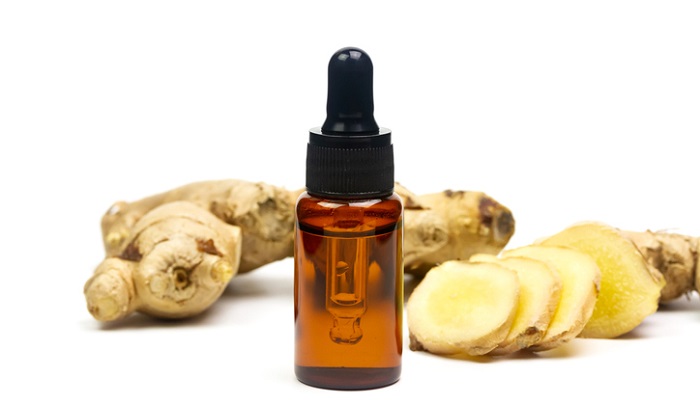It happens to all of us at some point: nausea strikes. Out of nowhere.
No matter the cause, it’s distracting at the very least and completely debilitating at the worst. But, it’s still not one of those things you need to rush yourself to the doctor for (unless you think the cause is serious).
That’s why turning to natural remedies at home could be helpful, especially if you have the right essential oils around. But what essential oils are good for nausea? Read on to find out how effective essential oils are for nausea and which ones to turn to for help.
Causes and symptoms of nausea
Nausea is a symptom itself and not really a disorder. That said, you can experience different symptoms that mean you have nausea. And, those symptoms could also indicate that something is causing your nausea—and it may even help you determine what’s causing it.
Some symptoms of nausea include:
- Excessive sweating (usually abrupt)
- Retching
- No appetite
- Feeling ready to vomit
- Pain or burning sensation in chest or throat
- Severe stomach pain
- Vomiting
If you’re experiencing nausea, it’s most likely due to a very common cause that’s not something too serious to worry about. Some common causes of nausea include:
- Morning sickness during pregnancy
- Migraine or other headache disorder
- Motion sickness
- Stomach flu
- Anxiety or depression
- Heartburn
- Severe allergy to food
- Vertigo or dizziness
- Alcohol hangover
- Food poisoning
Sometimes, however, nausea may signal something more serious. If you’ve determined that none of the above are possible causes, be sure to talk to your doctor, as it could possibly be:
- Severe liver damage (or liver failure)
- Heart attack
- Intestinal obstruction
- Hematoma
- Pancreatic cancer
Can essential oils help with nausea?
Natural and herbal remedies are widely known to provide some of the simplest and quickest relief for nausea. Since essential oils are likewise some of the best extractions of natural and herbal remedies you can use, these oils can be incredibly effective at helping with nausea troubles.
Some may recommend consuming or drinking diluted essential oils in water. However, the safety around doing this is unclear and quite mixed. Most essential oil experts would not recommend this, just to be safe.
Fortunately, even simply placing an essential oil into a diffuser—or adding some diluted topically onto your skin for inhalation—can help allay most nausea symptoms if the cause or the case of the nausea is mild. If the cause for your nausea is unclear or serious, don’t rely on essential oils to help with your nausea. Instead, contact a health professional immediately.
What are the best essential oils for nausea?

For any of the below essential oils, follow diffuser instructions for use. Inhale freely in the presence of the diffuser until you experience relief.
You may also dilute a drop or two of essential oil in a carrier oil and apply topically, such as near mouth or nose in order to inhale the fragrance and experience relief.
1. Ginger
No herbal remedy is more famous for helping with nausea than ginger, the Asian culinary spice. Ginger chews, candies, and even ginger beer or ginger ale have long been go-to home remedies for both adults and kids dealing with the upset stomach and discomfort of nausea.
The popularity of ginger for nausea is so strong that it simply isn’t questioned! There is lots of empirical evidence supporting ginger’s use for nausea, though there are also plenty of scientific studies testing and proving its benefits for nausea as well.1 This also applies to essential oils when topically applied, or diffused, and then inhaled for relief (even if the internal route of consumption is more popular).
2. Thyme
While ginger is the popular nausea home remedy in the West and Asia, thyme is considered the standard popular natural remedy in many other parts of the world. In some Caribbean countries, for example, thyme is given to mothers straight after childbirth to help with nausea and morning sickness.
Studies also show that the species of the thyme genus (Thymus) can help with both digestive discomfort and inflammation, both of which can lead to nausea or be the cause of nausea.2
3. Catnip

Most would not associate catnip with helping nausea at all. Herbalists tend to recommend it for other digestive issues, while the average person is more likely to give it to their cat for fun rather than taking it themselves.
But catnip (including catnip essential oil) could be good for supporting some of the more common causes behind nausea—especially stomach upset and heartburn.3 4 It may also help soothe stress or anxiety, as it is slightly sedative.
Interestingly enough, some sources show that catnip could be good for these things in both you AND your feline friends. It may be worth trying it for nausea related to these issues, especially when used aromatically (as the fragrance of catnip essential oil is not too strong).
4. Chamomile
Besides being tasty, aromatic, and calming, chamomile is known to also help settle the stomachs of those with nausea. For hundreds (if not thousands) of years, chamomile tea and other preparations of the flower were given to children and babies with colic, along with adults dealing with digestive upset.
Studies even show that chamomile can be particularly effective for this aromatically, such as in essential oil form when used in a diffuser. One study showed that inhalation of chamomile essential oil by diffuser greatly helped with symptoms of nausea and stomach upset in people undergoing chemotherapy.5
5. Lemon balm
Over the ages, lemon balm has been another popular remedy for stomach ailments. It hasn’t been favored specifically for nausea however, and there still haven’t been many studies on it for nausea in particular, either.6
That said, many herbalists would be confident to recommend lemon balm as a remedy. It has broad-spectrum support for digestive ailments, just like a lot of its other close relatives in the mint family…and its fragrance is divine!
Lemon balm is, on the other hand, known to support anxiety and depression. If your nausea is related to either of these issues, diffused or topical lemon balm essential oil aroma could possibly bring you some relief, maybe even more effectively than other options.
6. Spearmint (Mentha spicata)

Almost everyone has experienced the stomach-soothing qualities of spearmint. As an after-dinner mint or gum, spearmint can tame a wild belly and keep nausea at bay.
Studies also show that use of spearmint essential oil successfully helped relieve nausea and vomiting in chemotherapy patients.7 It’s aroma can be very strong, so it works well in a diffuser. However, if more strength to relieve nausea is needed, diluted topical application can be helpful and effective as well.
Essential oil blends for nausea
Natural remedies, herbs, and essential oils are known to be more effective when multiple herbs and remedies are used together for the same objectives—having a “synergistic” effect.
Not all nausea is the same. It could be caused by entirely different things from person to person. As such, these specified blends could help address these more particular nausea causes.
Morning sickness blend
For women dealing with morning sickness, combine equal parts ginger essential oil and thyme essential oil into your diffuser or diluted essential oil topical ratios.
Follow diffuser instructions for proper amounts and inhale as needed until relief is felt. Apply topical diluted essential oils to pressure points in the body, or close to your face or nostrils where it can be inhaled continuously for relief.
Anxiety and nervousness blend
For dealing with nausea related to mild bouts of anxiety or depression, combine equal parts lemon balm, chamomile, and catnip essential oils together.
Follow instructions for use as laid out in the previous section for the morning sickness essential oil blend.
Strong nausea blend
For dealing with very strong or overwhelming nausea of any kind, try combining equal parts spearmint essential oil with ginger essential oil. Use as laid out by the instructions in the first section for essential oil blends (morning sickness essential oil blend).
Other remedies for nausea
Knowing what essential oils are good for nausea, and knowing how to use them at home, can help bring a lot of relief to most nausea issues. That said, sometimes essential oils for nausea might not be effective enough.
If that’s the case, don’t hesitate to look into these other common remedies for nausea at home. (These can also be used in conjunction with essential oils for nausea):
- Drinking plenty of water (sipping it slowly)
- Eating dry or bland food (bread, crackers, etc.)
- Taking over-the-counter anti-nausea medication
- Steering clear of fatty, spicy or overly sugary foods
If your nausea doesn’t go away, or you are starting to wonder if your nausea may have a more serious cause, make sure to contact your doctor right away. This is especially important if you are not just nauseous, but are perhaps also vomiting excessively without knowing the cause.
In other instances of nausea or stomach upset—whether related to anxiety, medication side effects, or something else—you can reach for essential oils at home.
 About Adrian White
About Adrian White
Adrian White is a certified herbalist, organic farmer, and health, food, and agriculture freelance writer—and upcoming author. She is a past contributor to Healthline with bylines in The Guardian, Civil Eats, and Good Housekeeping. Adrian is also the co-owner and operator of Jupiter Ridge LLC, an organic farm growing diverse vegetables, mushrooms and herbs.
Sources:
1. Lete, I., & J. Allue. “The Effectiveness of Ginger in the Prevention of Nausea and Vomiting during Pregnancy and Chemotherapy.” Integrative Medicine Insights 11 (2016): 11-17.
2. Rizzo, C.S, & R. Roth-Ehrang. “Improvement of gastrointestinal discomfort and inflammatory status with a proprietary Wild Thyme extract.” Planta Medica 88, no. 15 (2022): 1564.
3. Castleman, Michael. The New Healing Herbs: The Ultimate Guide to Nature’s Best Medicines. (United States of America: Bantam, 2001).
4. Lust, John. The Herb Book. (United States of America: Bantam, 1974).
5. Putri, I.N., R. Amelia, & S. Rahayu. “The chamomile aromatherapy reduce the scale of nausea.” International Journal of Public Health Sciences 8, no. 3 (2019): 294-299.
6. Ulbricht, C., T. Brendler, et. al. “Lemon balm (Melissa officinalist L.): an evidence-based systematic review by the Natural Standard Research Collaboration.” Journal of Herbal Pharmacotherapy 5, no. 4 (2005): 71-114.
7. Tayarani-Najaran, Z., E. Talasaz-Firoozi, et. al. “Antiemetic activity of volatile oil from Mentha spicata and Mentha x piperita in chemotherapy-induced nausea and vomiting.” Ecancermedicalscience 7 (2013): 290.